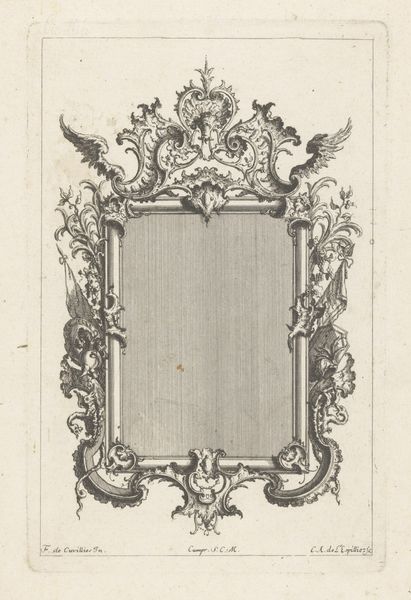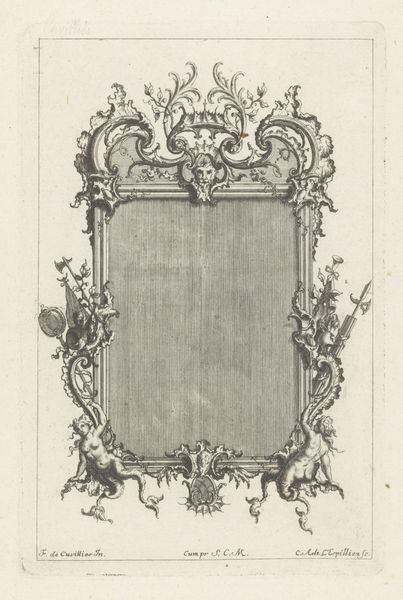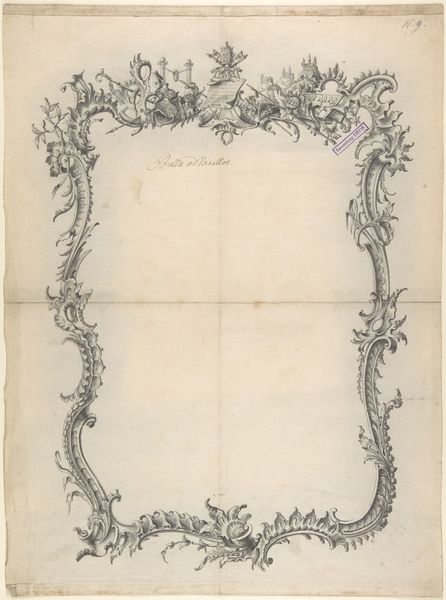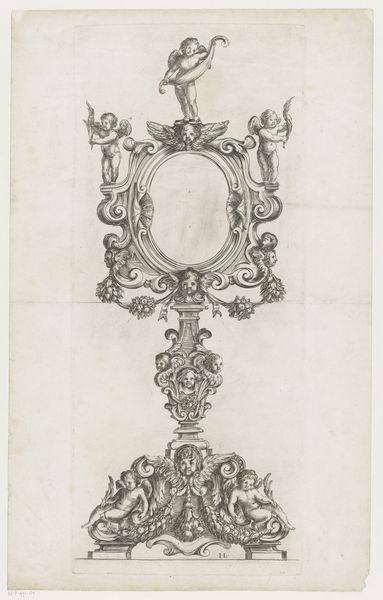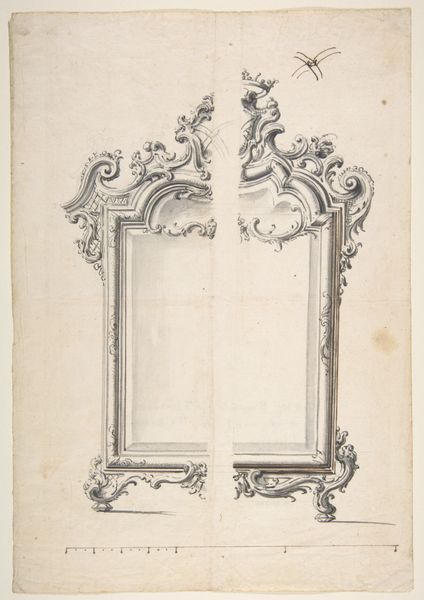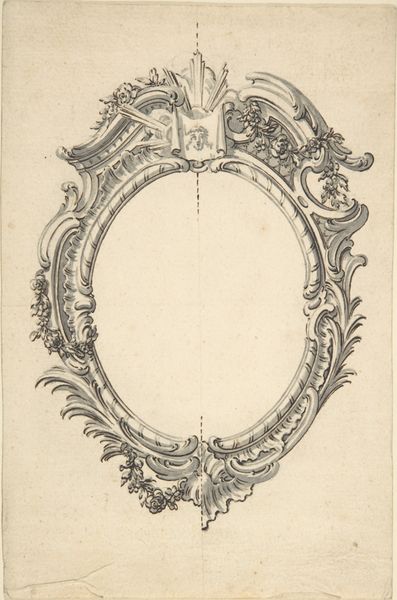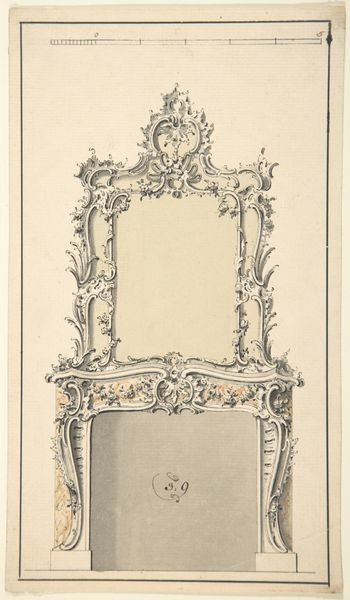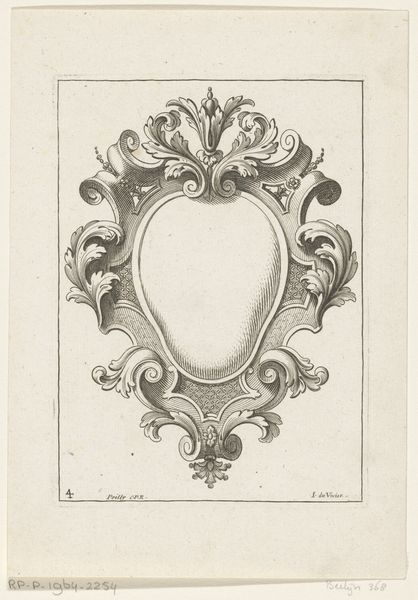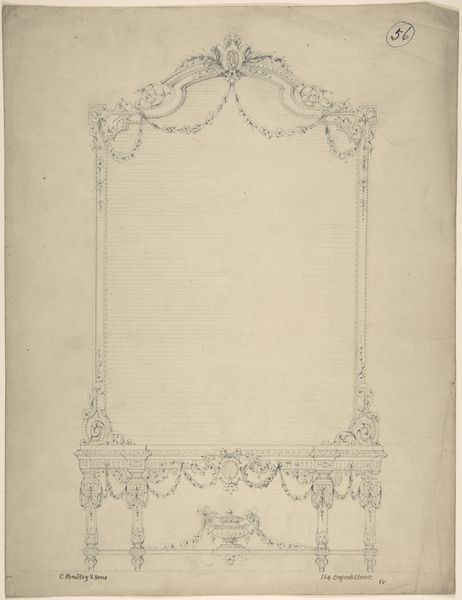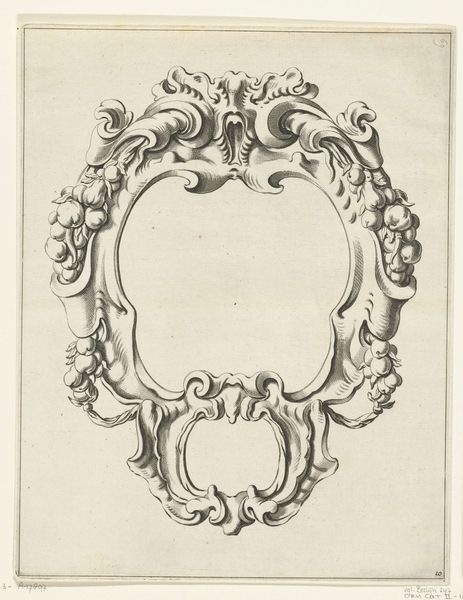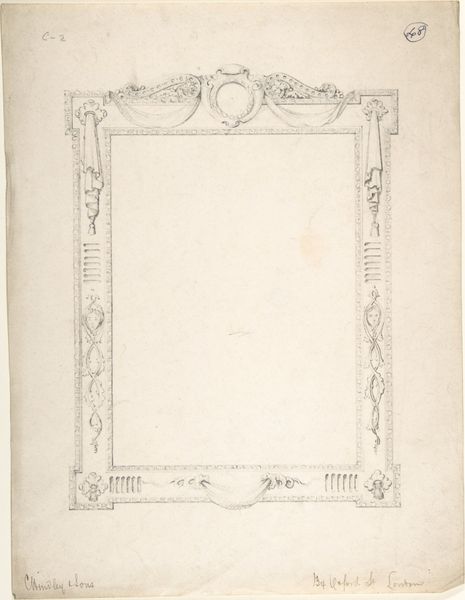
drawing, graphic-art, print, engraving
#
drawing
#
graphic-art
# print
#
decorative-art
#
engraving
#
rococo
Dimensions: 13 1/16 x 9 5/16 x 3/16 in. (33.2 x 23.6 x 0.4 cm)
Copyright: Public Domain
Curator: Matthias Lock’s print, “Six Sconces,” created in 1744, offers a fascinating example of Rococo design, now part of the Metropolitan Museum of Art's collection. What strikes you initially about this graphic work? Editor: The sheer ornamentation! It's as though nature has erupted into delicate, formalized curls and flourishes, completely subsuming any sense of functional structure beneath layers of embellishment. There is an almost wild energy contained within that pale ink on paper. Curator: Exactly! The engraving medium lends itself particularly well to Rococo's emphasis on intricacy. Note how Lock masterfully uses line weight to create depth and texture, mimicking the carvings of actual sconces that would have been crafted from wood or metal. Consider also the asymmetry—characteristic of Rococo—that adds to the dynamic feel. Editor: It’s as though he’s evoking the ephemeral—smoke, waves, even the way light flickers across surfaces. I also observe the curious faces worked into the design, almost hidden within the foliage. Are they mythological figures, perhaps, or something more whimsical? Their inclusion certainly enhances a sense of the fantastic, playing with notions of reality and illusion. Curator: Many designs from this period feature motifs borrowed from classical mythology and the natural world, blended with pure invention. Those masks and foliage would certainly imbue the finished sconce with a layer of cultural and symbolic meaning. They suggest a conscious aspiration to associate oneself with history, power, and even beauty, wouldn't you agree? Editor: Absolutely! This wasn't simply about illumination, but projecting status and embodying an aesthetic ideal. Though seemingly lightweight, “Six Sconces” represents significant cultural ambition. Thank you for providing fresh insight! Curator: It reminds us that graphic art, particularly prints like this, could circulate ideas and tastes far more widely. Exploring these designs gives us access to an era’s aspirations, quite unlike anything else.
Comments
No comments
Be the first to comment and join the conversation on the ultimate creative platform.
